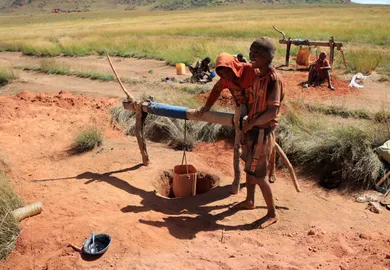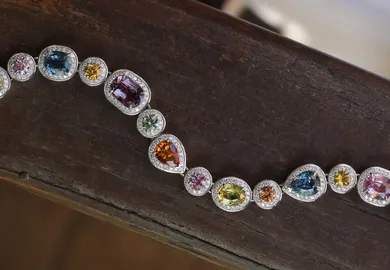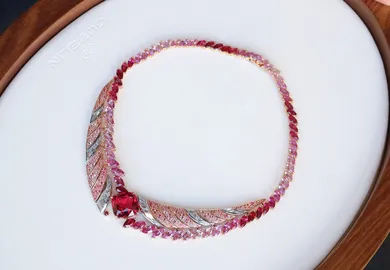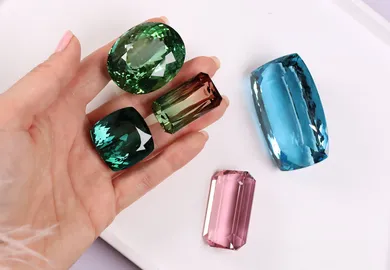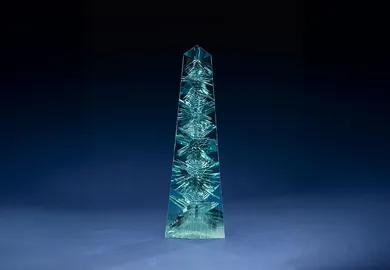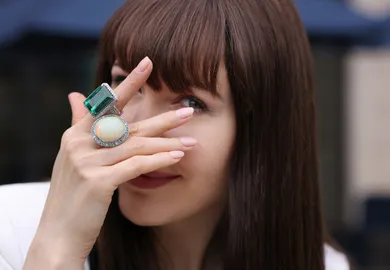

Born from Lightning: Didier Brodbeck and Hayley Henning Explore all the Mysteries that Surround Tanzanite
What do you know about the precious stone tanzanite? Many respond to that question saying that they know basically nothing. In fact, this relatively new precious stone was only discovered in 1967. It has been found and mined in only one place on the planet: in the African nation of Tanzania, which gave the stone its name. This isolated concentration of a particular mineral has made the stone unusually rare and valuable, so it’s worth getting on familiar terms with it.
All the useful information you need to know can be found in the newly published Tanzanite: Born from Lightning, written by the journalist and author of multiple books Didier Brodbeck together with the founder of The Tanzanite Foundation Hayley Henning.
In July 2013, Didier Brodbeck and I held a conference dedicated to tanzanite for the very first time. It went surprisingly well so we promised each other there and then that we would put together a table-top book about this enchanting stone. And we decided to publish the book ourselves. – Hayley Henning
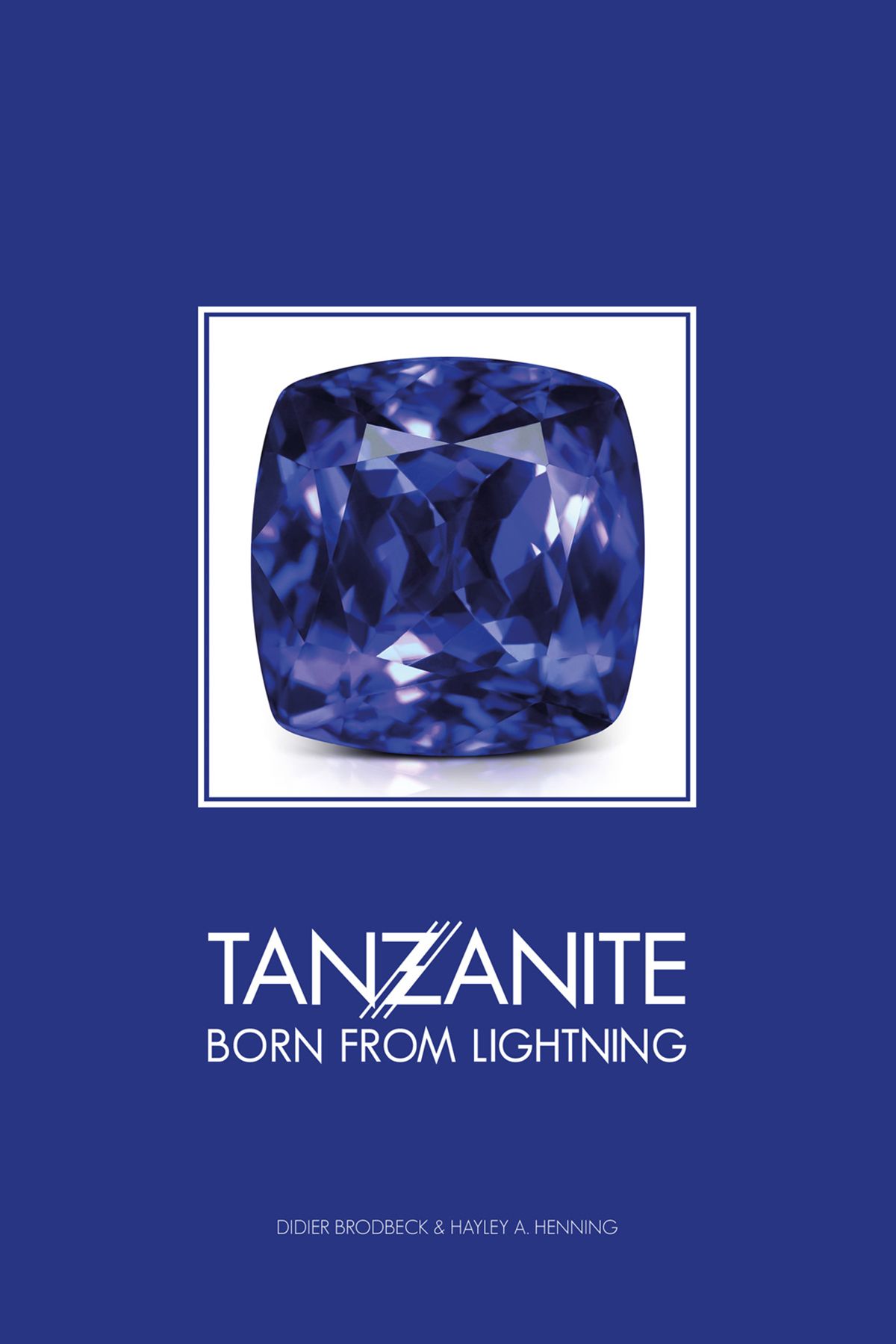
Tanzanite: Born from Lightning book by Didier Brodbeck and Hayley Henning
She and Didier were truly blazing with a desire to get a book worthy of the mysterious stone out there finally, otherwise the project would just remain on the back burner forever. In the Introduction, Didier divulges some interesting facts about tanzanite, tells the legend of the African Maasai tribe about the birth of the stone and the reason why no one in France is feverishly scrambling to use it.
According to the author, reserves of the blue-violet stone will be completely exhausted in 25-30 years, something which is also confirmed by Hayley in her introductory summary. She also draws a parallel between the stone and Tiffany & Co., briefly describes her work in Tanzania and The Tanzanite Foundation, with whose help schools, housing and clinics have been built for the local communities.
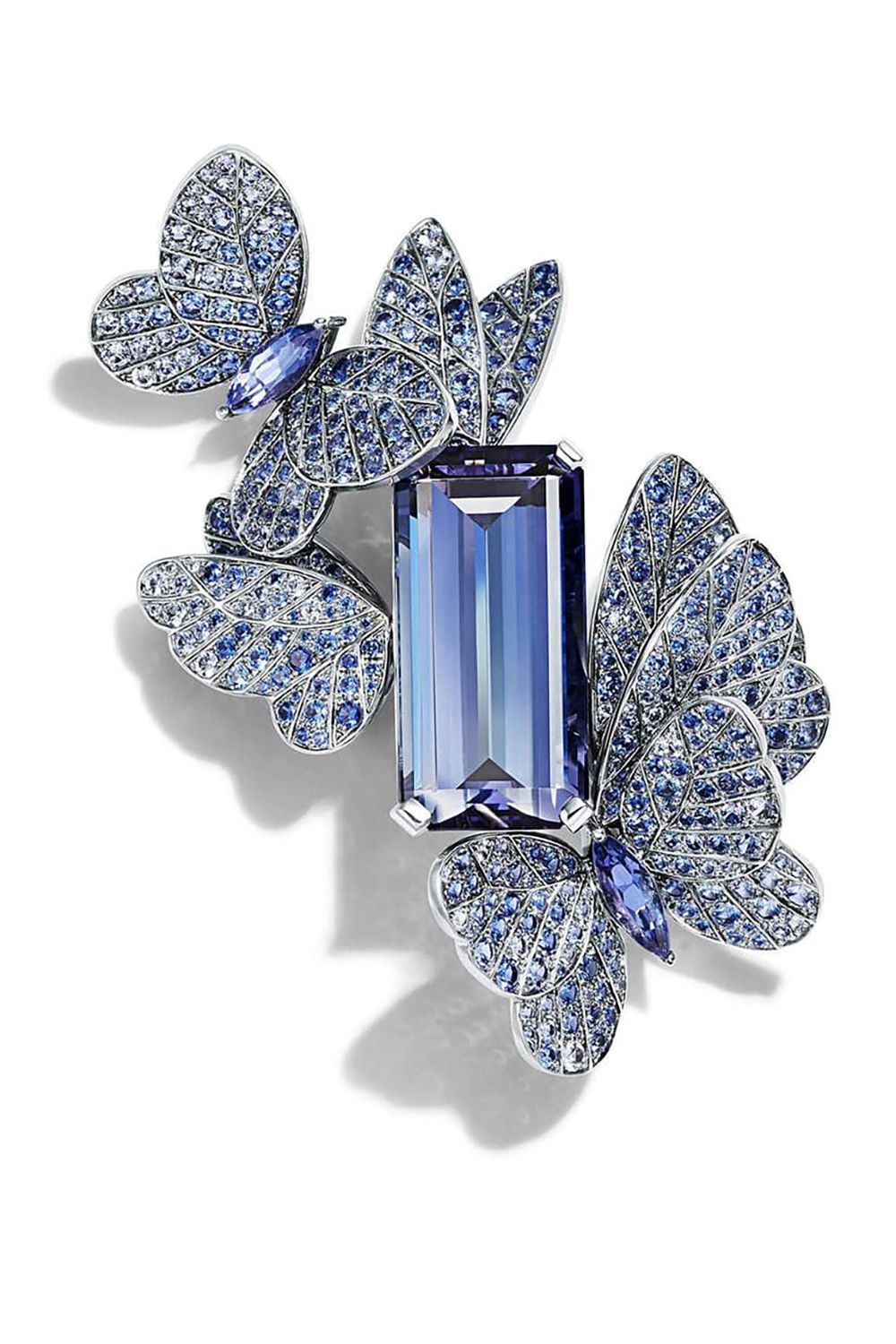
Tiffany & Co. Blue Book 2018 collection brooch in platinum with an emerald-cut tanzanite of over 27 carats, round and marquise sapphires, over five total carats, and round brilliant diamonds
For aesthetic pleasure and to immortalise the most exquisite tanzanite jewellery ever made, the second part of the book is dedicated to stand-alone works of renowned boutiques, brands and jewellery designers from countries across the world. The extensive range of carefully selected jewels demonstrates the potential of this unique chameleon gemstone. Lorenz Baumer, Piaget and Tiffany & Co. used faceted stones, Boucheron – cabochons, Giampiero Bodino – beads, de Grisogono – briolettes, Jewellery Theatre – unfaceted stones with a curved shape, and Ornella Iannuzzi – in its natural unpolished form.
One chapter is dedicated to the American jewellers Oscar Heiman, Arunashi, Gumuchian, Yael Designs and many others, and the section ‘A Cut Above The Rest’ provides information on rare examples of investment tanzanite (without a setting). I particularly enjoyed the final part of the book which includes frequently asked questions.
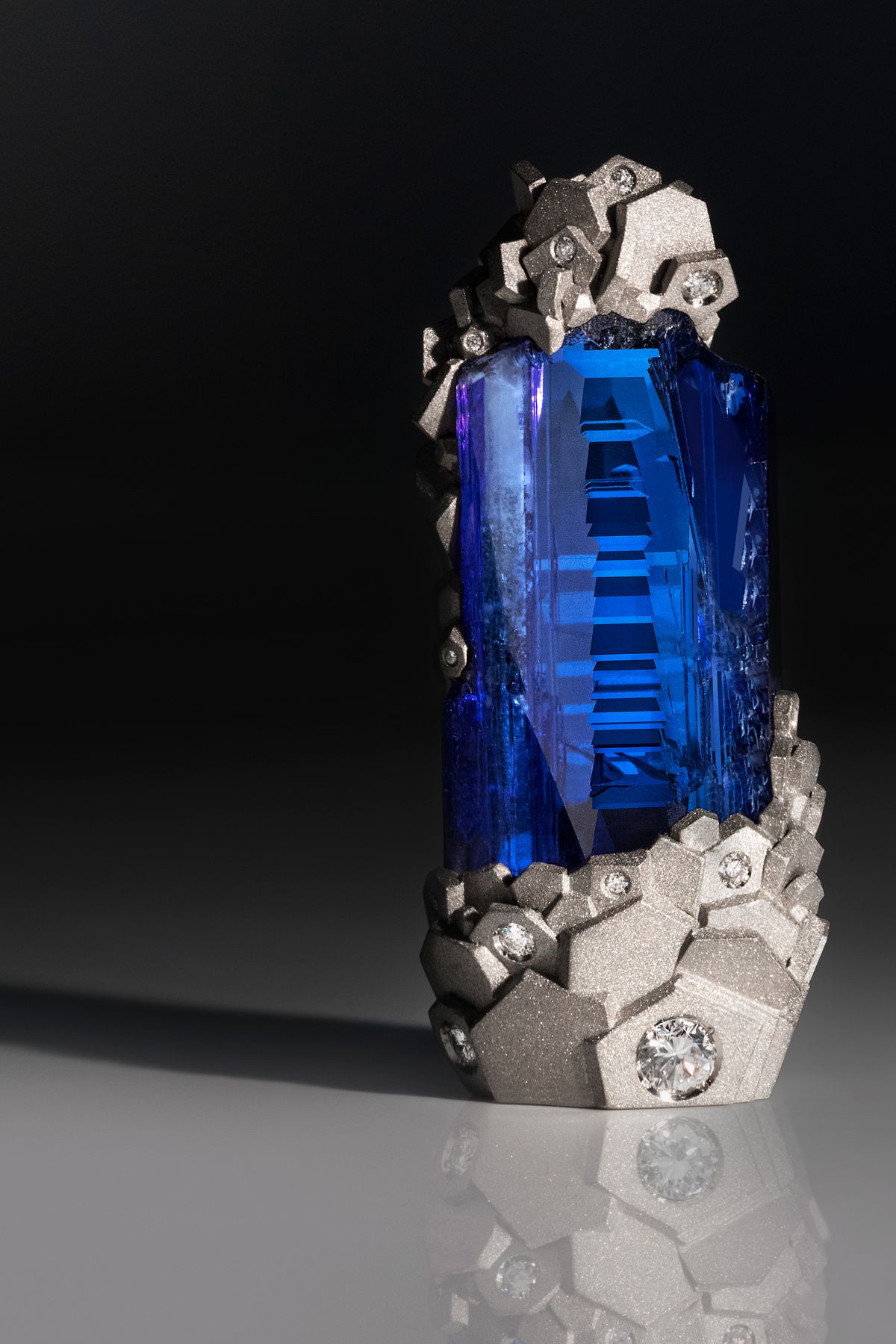
Ornella Iannuzzi L’Exceptionnelle pendant with rough tanzanite and diamonds
Most people want to know where tanzanite gets its unusual colour, a hue that is considered one of the most valuable insofar as the stone is rare by comparison with diamonds, emeralds, sapphires and rubies, and/or how the price of tanzanite compares to that of diamonds. In Tanzanite: Born from Lightning, you will find the answers to these questions and many more.

WORDS
Katerina Perez is a jewellery insider, journalist and brand consultant with more than 15 years’ experience in the jewellery sector. Paris-based, Katerina has worked as a freelance journalist and content editor since 2011, writing articles for international publications. To share her jewellery knowledge and expertise, Katerina founded this website and launched her @katerina_perez Instagram in 2013.


